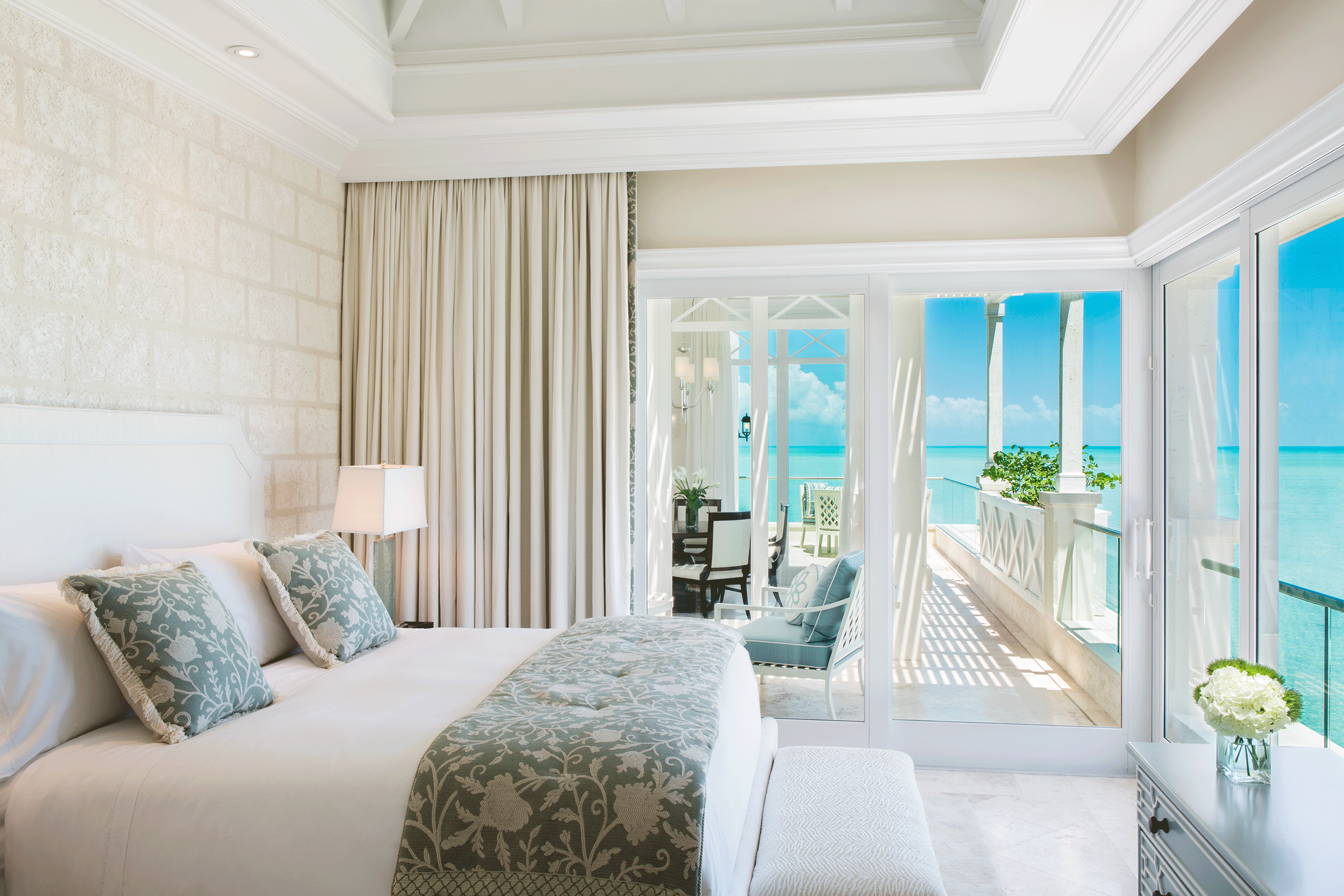At The Shore Club, on Long Bay Beach in Providenciales, Turks & Caicos, the undisturbed Colonnade Pool awaits bathers, the soft, white sand is groomed and the fastidious staff stands at the ready. Oh, how soon they’ll be put to the test. For, if you build it, they will come.
Which is exactly what real estate and development firm The Hartling Group did, opening the 110-room Shore Club in December on a 3-mile stretch of radiant beach on the Caribbean side of Providenciales, an area comparably void of the abundant supply seen in Grace Bay, across the island.
Developing and opening a new Caribbean resort is not for the faint of heart, when you factor in the luckless Zika scourge and the expense to build and run the resort. But for The Hartling Group, developing properties in Turks & Caicos is old hat: it also owns The Palms and The Sands, both on Grace Bay. The Shore Club, as Stan Hartling, CEO of The Hartling Group, put it, is a continuation and elevation of the group’s previous resorts. “As we grow our ownership and client base, we realized we wanted to refine the experience,” he said.
Hartling, who owns a villa near the resort, had the foresight to understand that there was a place for an exclusive resort on Long Bay Beach. “I sensed what you could create here that a lot of people weren’t getting an opportunity to see,” he said. He also capitalized on land acquisition, buying two parcels, he explained, that are the only ones on the beach large enough for resort commercial development—40 acres in total.
Buying In
The Shore Club is most definitely a resort escape, but the project itself is a real estate play in disguise. All of the 38 units, which are then subdivided to create the 110 rooms, are for sale, and since opening, around 85 percent of the units have been sold. “We are designed as an upfront real estate game, and then figuring out how you make it run as a hotel afterwards,” Hartling said.
“With a hotel, there’s only one thing that values it—the cash flow—and there’s only one way to sell it—as a whole hotel. Here, the individual investor can say, ‘You know what, I actually see some growth in real estate.’
“We take a model where the cash flow alone for the investment is not enough, but when we can add capital appreciation and personal usage, it works.”
When owners aren’t occupying their units, they are rented out, with revenue split 50/50.
The development is a study in Barbadian modern luxury style. The hotel is also stealthy laid out: Hartling and Miami-based architecture firm RAD purposely curved all the resort’s walkways so that guests can never see more than 30 feet in front of them, giving the property a serpentine effect.
Absent of The Shore Club—and for the vast majority of Turks & Caicos hotels—is a hard brand. To Hartling, it’s a simple matter of dollars and sense. “We use what would be brand dollars and convert those into marketing dollars,” Hartling said. “I’m not saying the brands aren’t viable here, I just think conventional hotels without a residential component have been a harder thing to get financed and to get institutional investors to support. That narrows down how many brands necessarily want to be in the space, and understand the space.”
Hartling admits that is changing (a new Ritz-Carlton is in the works). “As the brands wrap themselves around the fact that these are proven concepts, then you’re going to see more. It’ll be the next progression, but the Caribbean is not an easy spot to come in and throw down standard operating procedures.
A perfectionist with three resorts under his belt, Hartling hasn’t yet committed to his next project. “I tell the team, I’d sooner do five resorts and have them all succeed than to do six and have one fail,” he said.

